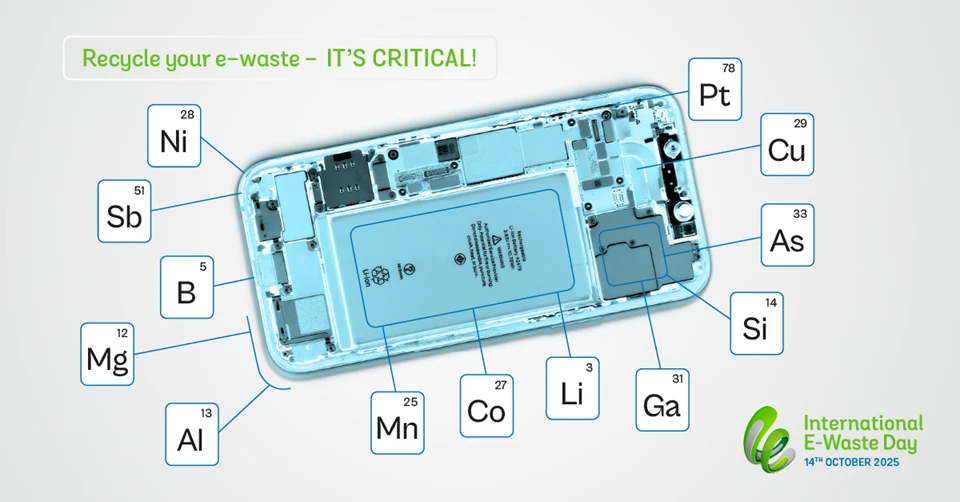International E-Waste Day 2025 to focus on Critical Raw Materials
Recycle your e-waste – it’s critical!
International E-Waste Day 2025 to focus on Critical Raw Materials
As the demand for smartphones, electric vehicles, solar panels, and other technology continues to surge, so does the need for the materials that make them work. This year, International E-Waste Day – taking place on 14 October 2025 – will spotlight Critical Raw Materials (CRMs), the elements that are mined in only a handful of countries and that are crucial to foster the green and digital transition.

Why are Critical Raw Materials so critical?
Geopolitics are highlighting how important these materials are. And while many people have heard about CRMs by now, not all of them know that these elements can be recovered from unused or broken electronic products sleeping in our drawers and attics. This is why the 8th edition of the International E-Waste Day (#ewasteday) will focus on raising awareness about this fact.
In Europe, the recent CRM Act sets ambitious targets: by 2030, 10% of annual CRM consumption should be sourced domestically, 40% should be processed within the EU, and 25% should come from recycling. This last goal cannot be reached without higher volumes of e-waste being collected and more specialised technology being developed.
Pushed by this legislation, there are currently new innovative technologies being developed to enable efficient recycling of CRMs, which are only available in very small quantities in the used electronic equipment and require a very elaborate treatment. Well-functioning processes have been in place for many years, though, for materials such as copper or aluminium.
A recent study authored by TNO shows that selective recovery of CRMs from e-waste could contribute up to 31% of the EU’s current CRM demand. However, the weight-based focus of the WEEE legislation fails to create incentives for the recovery of these materials. Current systems prioritize volume over value. Other reports, such as the recently issued study of Deloitte, also insist on changes in this Directive to allow more circular approaches.

What can we do?
Legislation and technology will not be of much help, unless consumers make the crucial step of bringing their end-of-use electricals to dedicated collection points. A study of WEEE Forum and UNITAR showed that households own an average of 74 EEE items (excluding lamps and luminaires), of which 61 items are in use, nine are hoarded but working, and four are hoarded and not working. The total mass of items in households is 90 million tonnes (Mt) of which 7 Mt is hoarded and working, and 3 Mt is hoarded and broken.
Most people have old phones, laptops, chargers or other electronic items sitting forgotten in drawers. By returning these items through official collection channels, consumers play a direct role in keeping critical resources in the loop and supporting the circular economy. International E-Waste Day organisers will provide guidance, tools, and local events to help citizens make informed choices and dispose of their electricals responsibly.
As with every year, ZEOS will participate in the event, carry out some awareness-raising activities, and primarily raise awareness online and through press releases.